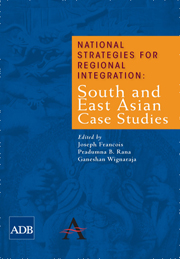4 - Bangladesh
from South Asian Perspectives
Published online by Cambridge University Press: 05 March 2012
Summary
Introduction
Bangladesh became an independent nation on 16 December 1971. Since then, the country has made impressive progress in some areas of economic development. Per capita income has more than tripled, human development has experienced remarkable progress, and the incidence of income and/or consumption poverty has nearly halved. But major challenges remain. Per capita income, which stands at $441, is low even by South Asian standards. Poverty is still rather high even though it has been declining. A number of human development indicators are still low even by standards of low-income economies. The development challenges for Bangladesh are quite daunting but by no means insurmountable.
Bangladesh must achieve faster pro-poor economic growth through more trade and investment growth, among other things, to hasten the process of poverty alleviation. While trade and investment flows can be expected to grow under the multilateral framework of the World Trade Organization (WTO), the experiences of many countries and subregions in different parts of the world indicate that significant benefit in this regard can be reaped through regional integration. East Asia and South Asia have been two of the fastest growing subregions in the world in recent times, with annual average growth rates of 6.9% and 5.8%, respectively, over the past decade. While Bangladesh has economic cooperation arrangements with the countries of South Asia, enhancing its economic cooperation with the East Asian countries would greatly benefit the country in terms of increased volumes of trade and foreign investment.
- Type
- Chapter
- Information
- National Strategies for Regional IntegrationSouth and East Asian Case Studies, pp. 137 - 206Publisher: Anthem PressPrint publication year: 2009



